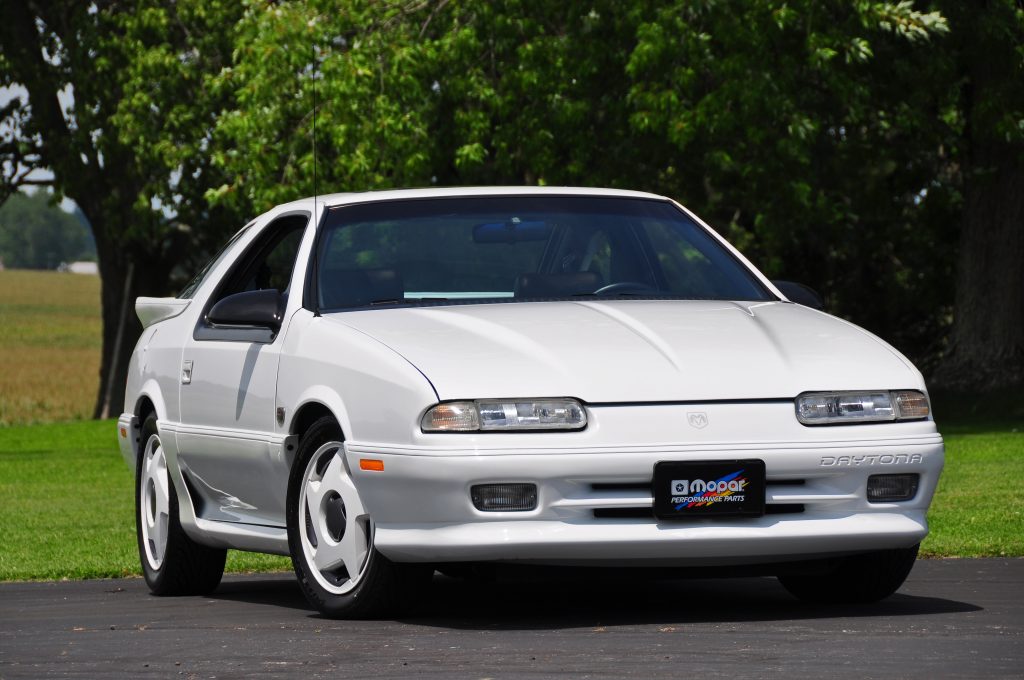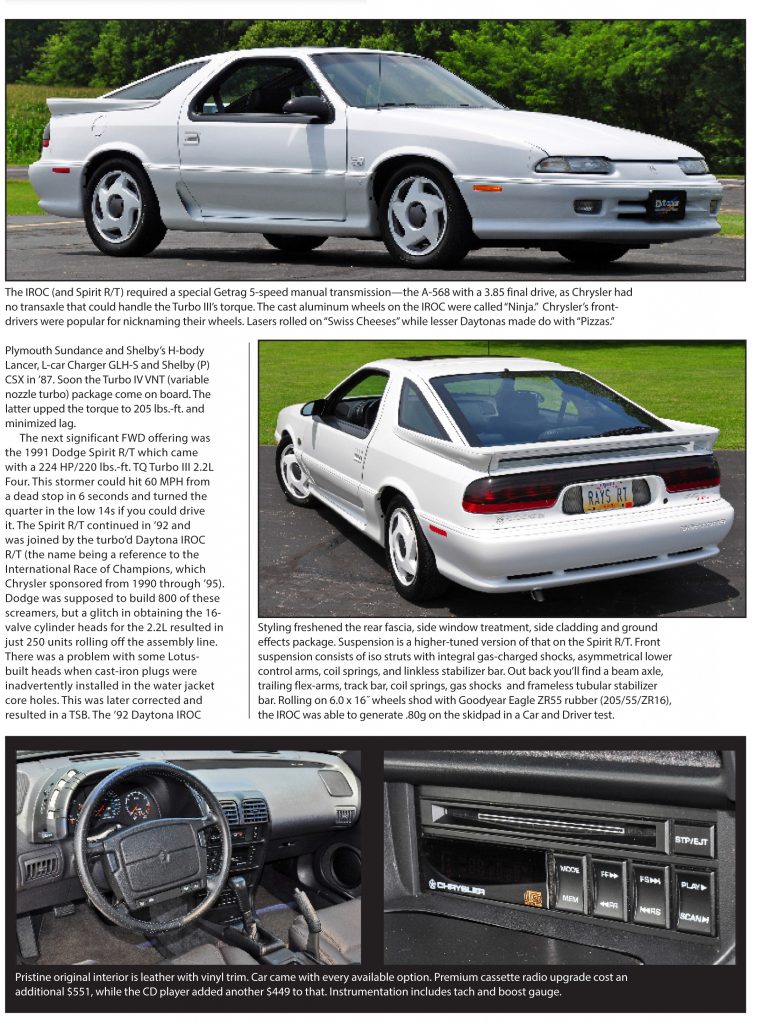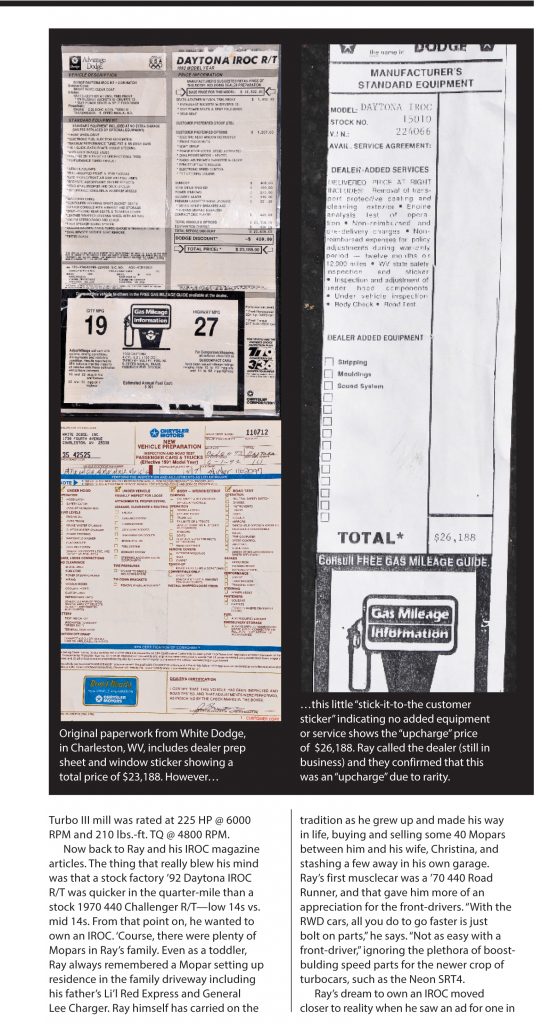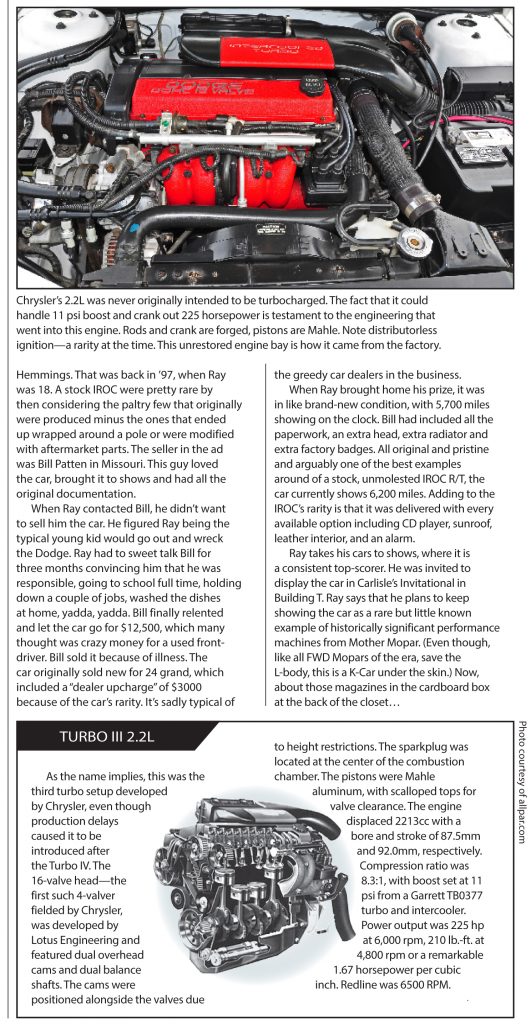The Little Engine That Could
A perfect example of Chrysler’s little-known 225 HP Turbo III FWD Dodge Daytona IROC R/T.
By Bill Woods Photos by TheBruntBros

Back in the early ‘90s, most 12 year old boys were collecting those magazines that you read with one hand or magazines with stories on hot cars. Ray Nash, however, was different. This 12-year-old was collecting magazines on Chrysler’s front drivers—cars which performance-hungry Mo’fans looked down their noses at as boring econoboxes (notwithstanding that the boring econo K-car, under the guidance of Lee Iacocca saved Chrysler’s skin in 1981). ‘Course, Ray wasn’t interested in just any Mopar front driver. He drooled all over the pages that showed a Dodge Daytona IROC R/T. A car so rare (only 250 made in ’92 and 181 in ’93) that most
motorheads don’t know what they are.
But let’s back up a bit and see where the IROC came from. Chrysler’s “performance” front drivers got their first traction in 1982 with the Plymouth Turismo and Dodge Charger (a travesty on the “Charger” name, for sure). These models punched the horsepower of the K-car’s 84 HP 2.2L to 94. A good handling chassis balanced the package. The ante was upped incrementally in the ensuing years with the 107 HP 2.2L 1983 Dodge Shelby.
Chrysler really began to rock the following year when they turbocharged their venerable 2.2 and got the thing to crank out 146 HP. This mill was an option in the Chrysler Laser and Dodge Daytona and top-drawer Daytona Turbo Z. Also significant that year was the new Dodge Omni GLH (for “Goes Like Hell”) which packed a maxed-out non-turbo 2.2L.True to its heritage, Chrysler backed the added power with a chassis to match. In ’85-’86, the 2.2L GLH, now turbocharged, was released as well as the Shelby-tweaked GLH-S with the Turbo II (intercooled) at 175 HP and 175 lbs.-ft. of torque. Hot Rod magazine ran the GLH-S against a ’66 Shelby Mustang on the road course at Willow Springs and on the dragstrip. The plucky Dodge ate the ‘Stang’s lunch by cutting a 2-second quicker lap time in the twisties, and a full second quicker in the quarter mile. Chrysler kept the performance ball rolling in ’87 with Turbo I and Turbo II (175 HP, intercooled) versions of the 2.2L and sporty variants (P-body) that included the Dodge Shadow,
What’s an IROC?
No , it’s not the latest whizz-bang from Apple, but the International Race of Champions. IROC was an auto race series promoted as an equivalent of an All-Star Game or The Masters. Drivers raced identically-prepared stock cars set up by a single team of mechanics in an effort to make the race purely a test of driver ability. Dodge Daytona bodies were used from 1990-1993, and Dodge Avengers in ’94-’95. These all were RWD tube chassis cars powered by a 355 cubic-inch Chrysler V8.




